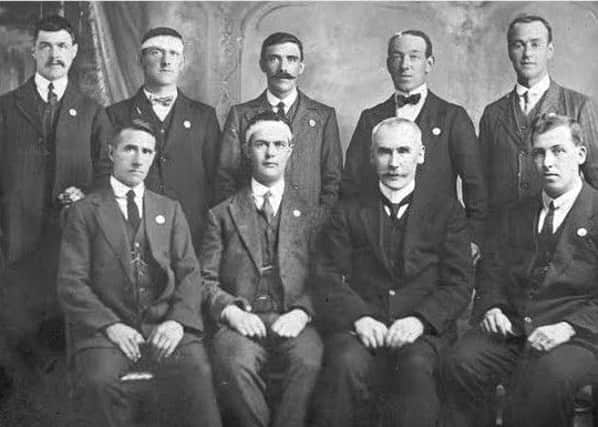Centenary of fire tragedy set for August


The explosion, which occurred on August 21, 1916, claimed the lives of five firemen and one officer from the original Bradford Fire Brigade.
Their names are commemorated on a large statue of a ‘fireman’, as they were then known, standing in pride of place at the West Yorkshire Fire and Rescue Service (WYFRS) headquarters, situated at Birkenshaw.
Advertisement
Hide AdAdvertisement
Hide AdFire chiefs have now announced that they are planning to rededicate the memorial on Sunday, August 21.
They would like to make contact with anyone who has a connection to the attending firemen on that fateful day.
The Roll of Honour for those who died in dutiful service includes station officer Charles Sugden (aged 44) and five firemen: Knighton Pridmore (46); Fred Normington (38); Eli Buckley (29); Edgar Shaw (24); Joseph Edmund Binns (28).
A fire followed by a series of over 20 explosions led to the attendance of the fire brigade in New Works Road, Low Moor.
Advertisement
Hide AdAdvertisement
Hide AdThe brigade responded with a fire engine from Odsal, the nearest station, and two from Bradford with a compliment of 15 firemen and three officers.
The Odsal men began to fight the fire but just after the arrival of the Bradford men there was a series of tremendous explosions which engulfed the firemen, throwing the “Hayhurst” fire engine in to the air.
Six men from the attending fire crews were killed that day and the other 12 were hospitalised, some seriously injured.
Due to the secrecy surrounding the war effort, and particularly the production of munitions, the disaster did not attract the publicity it would have in peacetime.
Advertisement
Hide AdAdvertisement
Hide AdTheories were voiced, but it’s thought that the danger of working with picric acid without proper safeguards was the actual cause.
WYFRS Deputy Chief Fire Officer Dave Walton said: “Some paid the ultimate price that day and we as fellow firefighters would like to stand shoulder to shoulder to rededicate our memorial on the centenary of the disaster.”